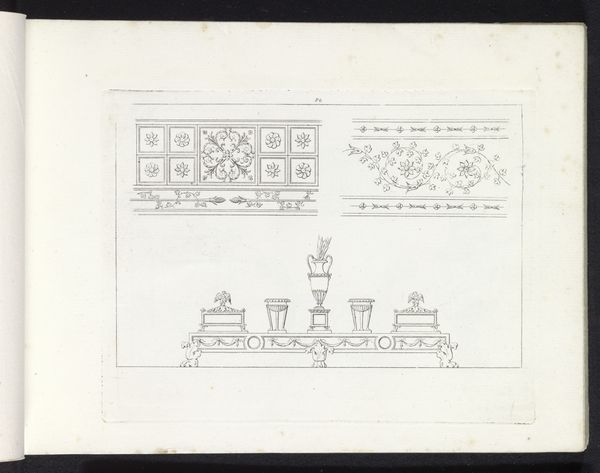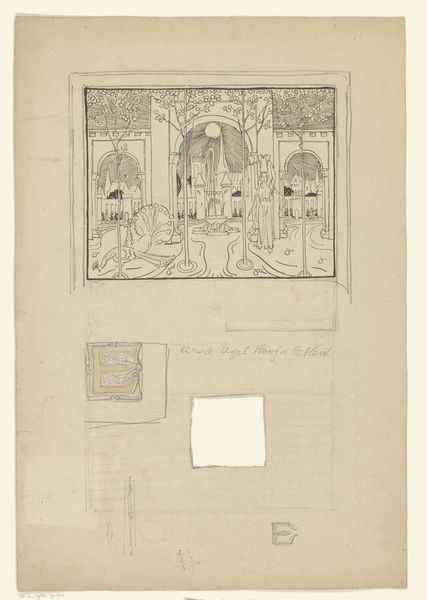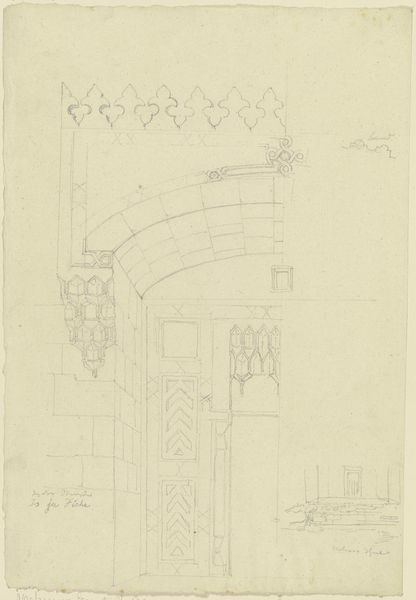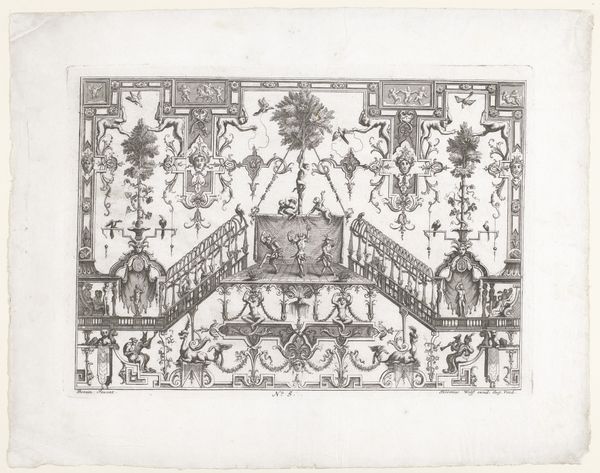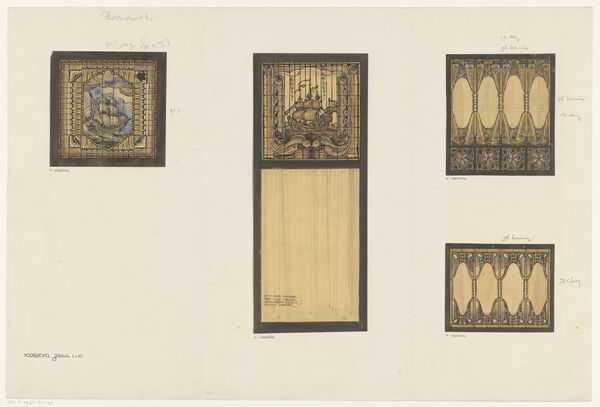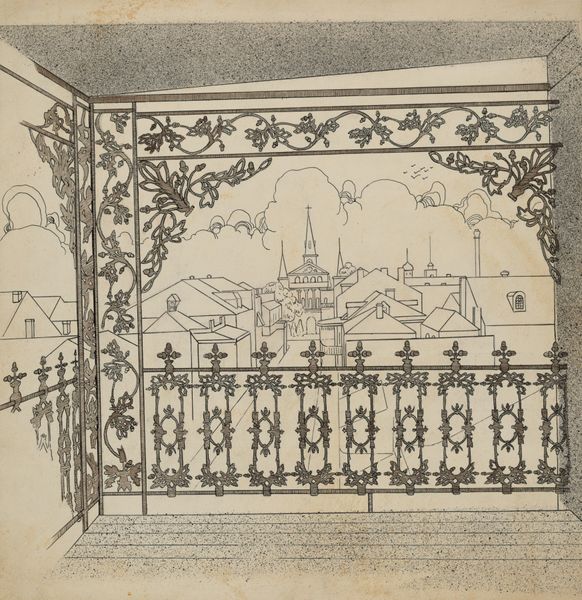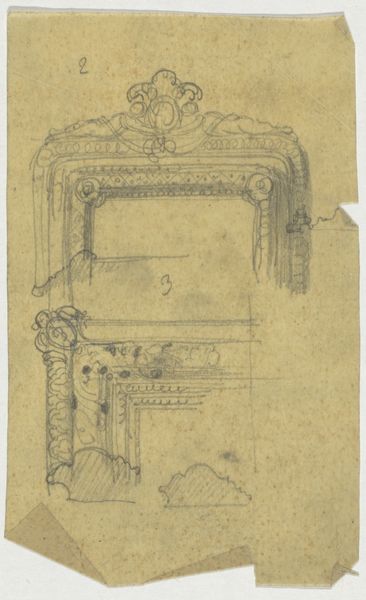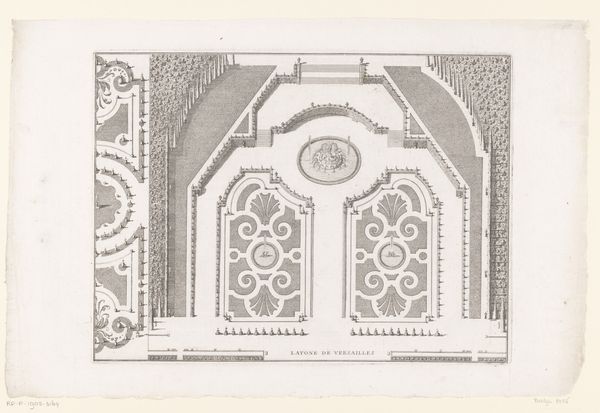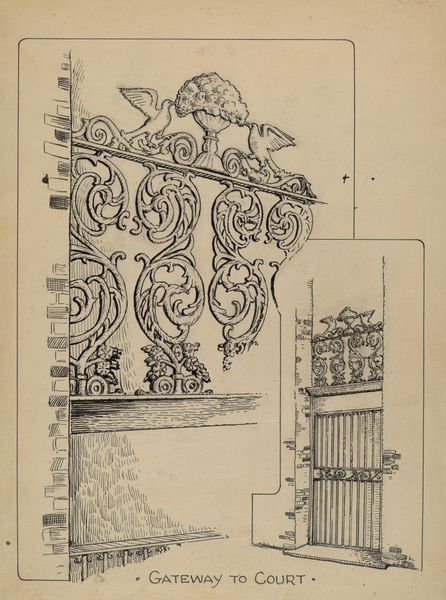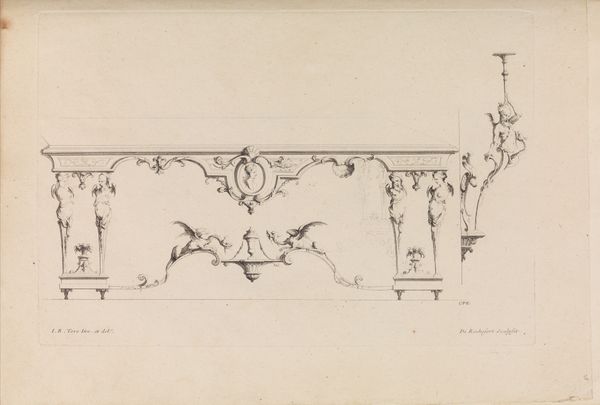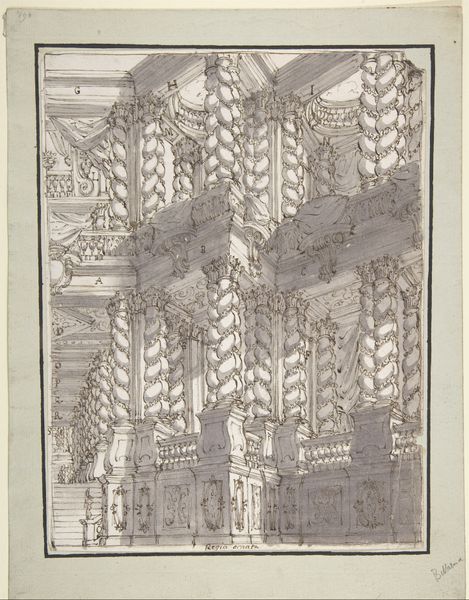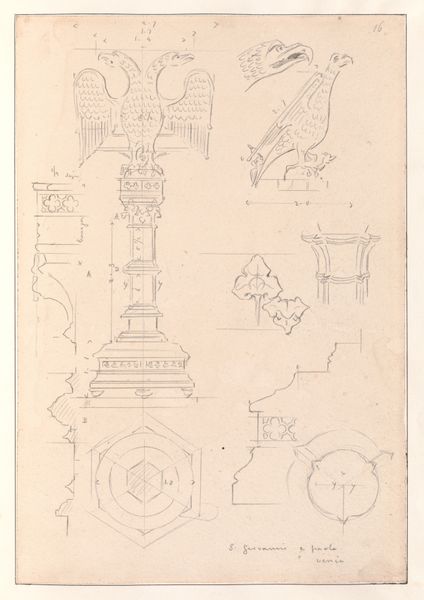
Dimensions: height 225 mm, width 315 mm
Copyright: Rijks Museum: Open Domain
This design for two iron fences was created by an anonymous artist in the Netherlands, sometime in the 18th century. The image presents a window into the aesthetic values of the Dutch elite. We can see this in the symmetrical arrangements, the classical motifs of garlands and ribbons, and the suggestion of cultivated nature. These features speak to the values of order, balance, and control that characterized the upper classes of the time. These fences were not merely functional barriers; they were statements of wealth and taste, designed to impress and to reinforce social hierarchies. While the artist remains unknown, their work serves as a valuable document for social historians like myself. By studying prints such as this one, we can uncover a wealth of information about the cultural values, economic structures, and institutional forces that shaped the world in which they were made. Examining estate records, design manuals, and other archival sources allows us to understand the meaning and significance of such artworks.
Comments
No comments
Be the first to comment and join the conversation on the ultimate creative platform.
